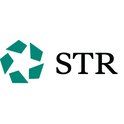Luxury chain scale shows pricing disparity | STR
By Lana Yoshii
STR determines chain scales by grouping branded hotels based on average room rates. There are seven segments in all: luxury, upper upscale, upscale, midscale with food & beverage, midscale without food & beverage, economy and independent. All independent (nonbranded) hotels are categorized in a single, separate chain scale category.
Think of chain scales as seven category buckets that allow STR to further break down data for better analysis and comparison. But while hotels and brands are placed in those buckets according to rate, vast variances in pricing can still exist within them.
Take the luxury segment, for example. Listed below is the last six years’ occupancy, average daily rate and revenue per available room metrics on a 12-month moving average through April.
Luxury Chain Scale Performance
12-Months Moving Average
| Date | Occupancy | ADR (USD) | RevPAR (USD) | |||
| This year | % Change | This year | % Change | This Year | % Change | |
| April 2004 | 65.8 | 221.23 | 145.66 | |||
| April 2005 | 68.4 | 4.0 | 234.58 | 6.0 | 160.55 | 10.2 |
| April 2006 | 70.8 | 3.4 | 251.88 | 7.4 | 178.22 | 11.0 |
| April 2007 | 71.4 | 0.9 | 276.16 | 9.6 | 197.20 | 10.7 |
| April 2008 | 70.9 | -0.7 | 292.06 | 5.8 | 207.06 | 5.0 |
| April 2009 | 63.8 | -9.9 | 275.37 | -5.7 | 175.81 | -15.1 |
As of April 2009, the 12-month moving average ADR was US$275.37. But what makes up that chain-scale average? How similar is the pricing of the brands and hotels that are in the luxury segment?
Currently, there are 316 hotels in the luxury chain scale in the U.S. Of those hotels, there are 15 hotel chains with at least five hotels in their brand. When reviewing those individual hotels’ performance, we noted rate disparity within each brand. Of the hotels within the 15 chains, the smallest disparity in ADR within a brand was US$88, and the largest disparity was US$873. The distribution of the rate disparity within a single luxury brand was as follows:
|
Rate Disparity Range |
Number of Brands |
|
Less than US$200 |
3 |
|
US$200 - US$500 |
7 |
|
More than US$500 |
5 |
Much of the rate disparity within a brand stems from the location of the hotels. Hotels in markets that typically run high rates such as New York and Hawaii will garner rate premiums over sister properties located in suburban markets. One third of these brands reported an ADR within 10 percent of the US$275.37 chain scale ADR. Conversely, only 20 percent of the hotels in this chain scale reported an ADR within 10 percent of $275.37.
This exercise was done to illustrate the fact that the majority of the brands within a chain scale, or even the individual hotels themselves, do not report ADRs that are materially close to each other or to the chain-scale average. There can be—and are—huge disparities between properties within a brand and brands within a chain scale.
